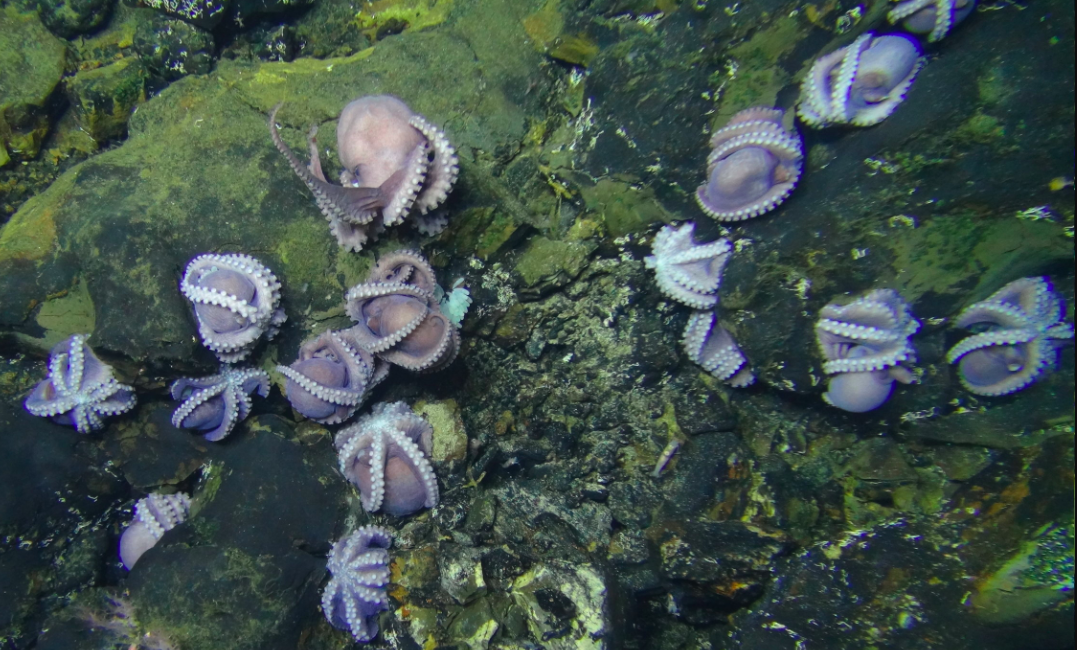At the Bottom of the Ocean, Octopus Moms Cling to Their Bad Decisions
Posted on Categories Discover Magazine

Parents may feel guilty when they use television to keep their kids quiet, or give in to a demand for cookies. But most of us are doing a better job than these octopus mothers. Scientists found them clustered on the sea floor, trying to grow their young in a warm bath that will certainly kill babies and moms alike.
The mothers were doomed to begin with. After mating, most female octopuses choose a spot to glue down a batch of eggs. Then they park themselves on top of those eggs and give up eating or moving. The mother stays there, guarding her developing eggs and washing them in seawater, until she wastes away. Researchers observed one deep-sea octopus mom brooding the same batch of eggs for four and a half years.
On expeditions in 2013 and 2014, other researchers explored a rocky formation about two miles under the Pacific, near Costa Rica. They sent down both crewed and robotic vessels to investigate warm water that intermittently seeps from the rock here. The fluid that leaks out “shimmers upon mixing with seawater,” the scientists write.
When their cameras got close to the rock, the researchers were startled to see several hundred octopuses. Some were swimming or drifting upright; many were clustered together with their bodies tucked into balls. These clusters turned out to hold dozens of female octopuses brooding their eggs alongside each other, in a kind of nursery.
The animals belonged to a poorly understood genus called Muusoctopus. Most were a dull purple color, with large eyes and relatively short arms. Beneath their balled bodies, the researchers spotted clumps of white, finger-shaped eggs standing upright.
The warm bath these mothers had settled into might seem luxurious. The water temperature outside the flow was only 1.8 degrees Celsius—barely above freezing—while inside the flow it ranged from 2.5 to 12.3 degrees Celsius (as high as 54 degrees Fahrenheit). Warm water should make the octopus embryos develop more quickly inside their eggs. But, the researchers found, this warm water seep held only half as much oxygen as the regular seawater.
The lack of oxygen was taking a visible toll. Octopuses within the warm flow were breathing much more rapidly than others. When the scientists were able to examine some of the eggs closely, they saw no signs that embryos were developing inside. They expect all the eggs to die.
How did these octopus moms land themselves in such a bad situation? It seems unlikely that they all read the same misguided parenting book.
Instead, the researchers suspect the doomed mothers are only a fraction of a much larger octopus population here. Some females may lay their eggs on this spot during a time when the warm water isn’t flowing. By the time it starts up again, they’ve already cemented their broods to the rock, and it’s too late to move.
The researchers think there are many more octopuses out of sight. Inside the crannies of the rocky formation, perhaps, they’re making parenting decisions that will at least keep their young alive.
Image: Phil Torres and Geoff Wheat